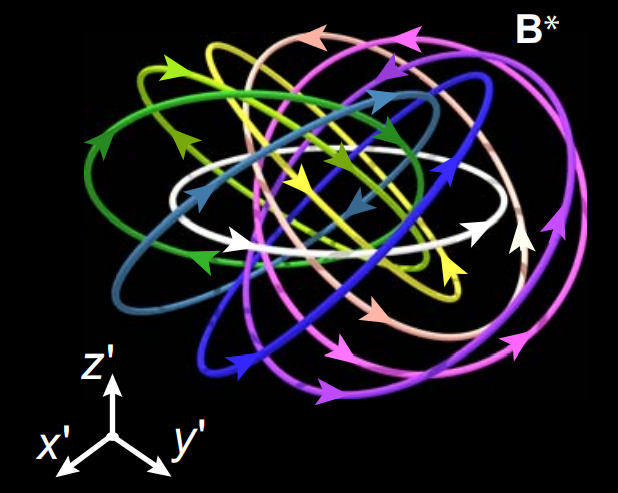The 'Skyrmion' May Have Solved the Mystery of Ball Lightning

Scientists bound the magnetic fields of a supercooled quantum object into a complex knot. And what they found may have finally solved the centuries-old riddle of ball lightning, luminous orbs that sometimes linger in the atmosphere during thunderstorms.
That bizarre knot was a quantum object called a "Shankar skyrmion" that was first theorized in 1977, but that no one had ever managed to generate in a lab. A skyrmion is a tightly clustered group of circular magnetic fields, with each circle crossing each other circle exactly once, the researchers expained in a paper published March 2 in Science Advances . [Twisted Physics: 7 Mind-Blowing Findings]
Think about what happens when you hook one key ring around another key ring. Then imagine adding more and more rings, hooking each new one to all the existing rings. The resulting shape would look like the magnetic fields of the skyrmion — impossible to pull apart without breaking the rings.

But the skyrmion is different from those key rings in a critical way: It's twisted. The interlocking lines of magnetism turn along their routes, twice. If you flew a tiny atom-exploring spaceship along one, you'd do two corkscrews over the length of the circuit.

The researchers built the skyrmion out of a cloud of atoms supercooled into a dense blob called a "Bose-Einstein condensate" — a state of matter that emerges just at the edge of absolute zero, where the borders between atoms blend together, and quantum effects start to take place at a scale humans can more easily detect and observe.
Using techniques developed to build an exotic class of quantum magnet, the researchers nudged the spins, or magnetic orientations, of the atoms in the condensate until the interlocking rings of the skyrmion emerged.
That's when it became clear that the skyrmion might be a good model for ball lightning.
Breaking space news, the latest updates on rocket launches, skywatching events and more!
Ball lightning, as Live Science previously reported, is a rare and poorly understood weather phenomenon where a colorful glowing orb appears — usually during a thunderstorm — and appears to skitter through the air, far outliving the jagged bolt of lightning people are used to.
Back in 1996, a paper published in Nature proposed that ball lightning might be the result of the magnetic fields around the plasma of a lightning bolt curling into a knot and trapping it within, and proposed a model for what those knotted fields might look like.
The researchers reported that the fields they observed around their cold little skyrmion matched the model proposed in that paper, suggesting that hot ball lightning may, in fact, be a giant, naturally occurring skyrmion.
Originally published on Live Science.
Join our Space Forums to keep talking space on the latest missions, night sky and more! And if you have a news tip, correction or comment, let us know at: community@space.com.

Rafi wrote for Live Science from 2017 until 2021, when he became a technical writer for IBM Quantum. He has a bachelor's degree in journalism from Northwestern University’s Medill School of journalism. You can find his past science reporting at Inverse, Business Insider and Popular Science, and his past photojournalism on the Flash90 wire service and in the pages of The Courier Post of southern New Jersey.

